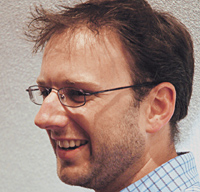From the editor: Surprises
 |
Nature still has many surprises left for us. Discovering them is increasingly difficult (and expensive) as we dig deeper into the foundations of the universe. The next discovery steps must be planned carefully, using all available information to increase the chance of success. At the same time, overcautious delays could prevent the field from remaining sustainable.
Many questions posed by the recent revolution in particle physics will be answered in the years following the turn-on of the Large Hadron Collider at CERN in Switzerland in 2007. However, those answers will not be enough to complete physicists' understanding, and will raise new questions for post-LHC study.
How should that study be conducted? The particle physics community has come to the consensus that a linear electron-positron collider is the tool needed to augment the LHC. This issue of symmetry presents aspects of linear collider R&D as over 500 members of the global particle physics community converge on Snowmass, Colorado, for the two-week 2005 International Linear Collider Physics and Detector Workshop and Second ILC Accelerator Workshop.
Funding an elaborate, expensive linear collider will require significant international cooperation. Going forward requires a convincing argument that demonstrates the real need to reveal the universe's mysteries, and which explains why a linear collider is the best machine to achieve that aim. An upcoming report commissioned by the US Department of Energy's High-Energy Physics Advisory Panel (HEPAP) will make the case for a linear collider within the context of physics' big questions, and in the light of the LHC's imminent start-up. Beyond that, society must agree on the need for the ILC.
A second report, coming from the EPP2010 committee of the esteemed National Academy of Sciences, will be an important resource for funding agencies. It will examine how the needs of particle physics fit within the framework of the rest of science. As a knowledgeable, independent body looking at particle physics from the outside, EPP2010 is well-placed to make this assessment.
But funding agencies also require proof-of-principle demonstrations and thorough plans. The Snowmass meeting will make a huge leap toward a final design concept for the ILC and identify the R&D still necessary for the machine.
Whether a linear collider is ever built will depend on what the science says is necessary and whether physicists can convince society that answering the universe's scientific questions is of sufficient value. The challenges are great, but the potential reward of a new world of understanding is enticement enough to tackle them head-on.
David Harris
Editor-in-Chief
Click here to download the pdf version of this article.


